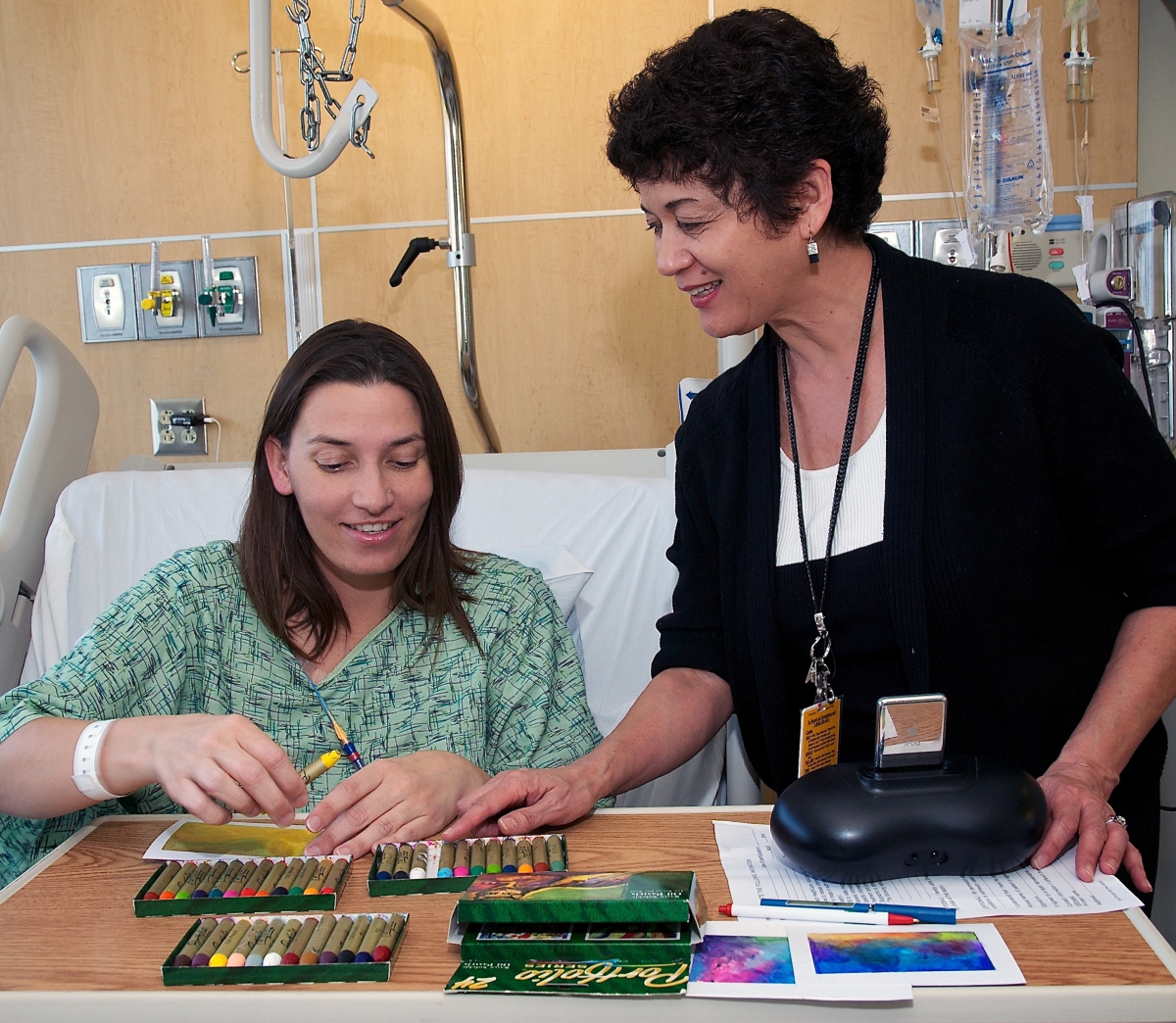
Judith Greer Essex, PhD
A Shaman in the Recovery Room: The Arts’ Surprising Return to the Job of Healing
Posted by Aug 24, 2016 0 comments

Judith Greer Essex, PhD
In a very real way, Expressive Arts Therapy is the continuation of a tradition as old as humanity. The shaman, who Andreas Lommel refers to as “the first aesthetically active human,” healed individuals and communities through drumming, dancing, chanting, dramatic enactment, and painting.1 For the last century, modern healthcare has been tremendously beneficial to humanity, both in extending and improving quality of life. But now many physicians and hospitals across the country and around the globe are once again recognizing a significant role for the arts in healthcare.
“We believe that sometimes due to a very rapid development of technology, the connection between arts and humanities and medicine was lost … so in a way the hospital has lost its soul. We want to restore that connection.” —Iva Fattorini, chair of the Global Arts and Medicine Institute 2

Here in San Diego, the arts once again are an integrated part of the healing profession, with the acceptance of Expressive Arts Institute graduates into the world of medical surgical and mental hospitals in the Sharp Hospital System. Our modern-day shamans are using art and music to speed healing, ease recovery, lower anxiety, and promote health. The Sharp HealthCare System has employed Institute graduates Anita Carter, LPCC, and Amy Andrews, MA, along with many institute interns in their Arts for Healing program. Their work in many different facilities with many different populations, from newborns to people receiving end-of-life care, has generated many positive comments from patients and family members.
Anita Carter came and we didn’t know what to expect from an expressive arts therapist. What we both got from experience with her was healing and calming. He felt the best he had afterwards and it was amazing. Thanked her afterwards for music with healing meditation. Wow! … Thanks a million. Love her artwork and will save it as a reminder of the healing experience. —Spouse of patient at Sharp Memorial Hospital
Expressive Arts Therapists bring a unique skill set to the work. Training in Expressive Arts focuses on the integrated use of visual arts, music, poetry, dance, and even drama, giving patients a rich range of expression that is helpful with the challenges of recovery from illness, trauma and injury. According the Sharp Healthcare Foundation, “…the Arts for Healing program brings our trained Expressive Arts Therapists into the hospital room, engaging patients in a variety of creative activities. … This program is designed to improve emotional and spiritual health by offering life-enhancing activities that provide comfort and encourage a faster recovery.”
Patients whose challenges lie in the area of mental health also benefit from the Expressive Arts program.
“It was a great experience to create different works of art using a variety of different mediums and materials. It’s a great feeling to have created something amazing and know that you are responsible. It’s good to focus on something positive and fun.” —Patient at Sharp Mesa Vista Hospital
Many healthcare organizations with very large budgets spend minimally on art, but the not-for-profit Sharp Healthcare System demonstrates that even a small outlay of capital can reach a lot of people. Funded solely through philanthropy, Arts for Healing also makes heavy use of volunteers, including our well-trained institute interns, to serve approximately 16,000 people a year on a budget of only $100,000, but the foundation is looking to expand its program through further charitable contributions.
"This is the most powerful force operating in our health system right now, this generational change," says Jeff Goldsmith, president of Health Futures Inc., Charlottesville, Va.3 As the aging population of baby boomers enters the age of illness management rather than illness cures, many will spend significant time in hospital and clinic settings, and there must be an expectation with this changing demographic that clinical settings will transform themselves into places to live rather than merely survive. We believe that incorporation of Expressive Arts is one part of such a necessary transformation.
1. Shamanism Beginnings of Art, by Andreas Lommel McGraw-Hill; Reprint. edition (1967)
3. http://www.hhnmag.com/articles/5298-Boomers-Will-Transform-Health-Care-as-They-Age
